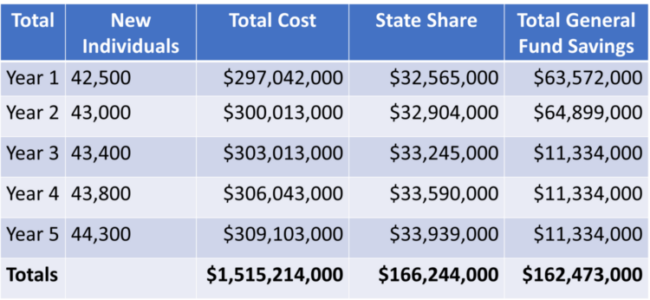
What’s next for Medicaid expansion?
As South Dakota welcomes the fine winter weather, there are 105 legislators along with dozens of industry lobbyists preparing for the annual January pilgrimage to the state capital. This group (whom I fondly refer to as policy wonks) will be working diligently to ensure key concerns are addressed for all South Dakotans. The basic key legislative issues include:
- Helping those who can’t help themselves
- Ensuring South Dakota has well-maintained infrastructure (roads, bridges, sewers, etc.)
- Ensuring public safety (law enforcement, health policy, etc.)
- Providing an education for our K-12 population.
The work would appear to be straightforward and somewhat easy to reach an agreement. However, this is rarely the case. Permit me to provide an example relating to the recent voter-approved ballot measure on Constitutional Amendment D (CA-D). Clearly bullets one and three above relate to CA-D, which will expand the state Medicaid program. Medicaid meets the criteria of bullet one and aligns with bullet three (health policy).
When South Dakotans voted to expand the Medicaid program by passing CA-D (56%/44%), they chose to expand access to healthcare for who cannot afford insurance and do not work for an employer who offers that benefit. Medicaid is a federal and state funded program to provide health coverage for people who meet certain eligibility requirements. South Dakota’s current Medicaid program primarily covers children, low-income pregnant women, parents and other caretakers’ relatives, seniors in nursing homes, and individuals with physical or developmental disabilities. CA-D expanded the Medicaid program to cover adults ages 18-64, up to 138% of the Federal poverty level – about $38,295 for a family of four and $18,754 for childless, non-disabled adults starting on July 1, 2023.
Medicaid expansion advocates in Pierre will be keeping an eye on what the legislature does
Keep in mind both the current Medicaid program and the expansion of the Medicaid program provides healthcare coverage – not cash payments – to individuals who are eligible for care.
There will be differing opinions in Pierre about Medicaid expansion. Keep in mind, previous legislative resistance to voter approved ballot measures. Moreover, the legislature has resisted all legislative efforts to expand the Medicaid program. Given this history, Medicaid expansion advocates in Pierre will be keeping an eye on what the legislature does with the “new” federal dollars to cover new enrollees (see total general fund savings in chart below).
A key component to understanding the fiscal windfall to South Dakota for passing CA-D is provided by the Legislative Research Council (LRC). The first two years of Medicaid expansion will provide a windfall of more than $60 million each year, depending on the number of new enrollees. In addition, South Dakota benefits from federal incentives for current Medicaid programs when late-state adopters, such as South Dakota, expand Medicaid. The inflow of these dollars may be difficult to track but are key to ensure South Dakotans have access to health care with the passage of CA-D.
The LRC fiscal analysis provides the first five years under current federal law, the state’s share of expenses could be $166,244,000, with the state recognizing additional general fund savings of $162,473,000. A breakout by year for the proposed Medicaid expansion is below, based on the current Medicaid budget.
With an eye on “an ounce of prevention is worth a pound of cure,” Senator Steinhauer sponsored a bill (SB 102) in the 2022 legislative session to establish a Medicaid expansion fund to hold those “expansion” dollars for Medicaid expenses. SB 102 passed the Senate but died in House Appropriations. The Chamber supported SB 102. Efforts to revive the language of SB 102 for the upcoming session are underway.
In addition, the S.D. Department of Social Services will need to amend the state Medicaid plan to incorporate CA-D and submit the plan to the Centers for Medicare and Medicaid Services for review and approval by March 1, 2023. Keeping an eye on the amendments to the plan will also be on the radar of those supporting CA-D.

The Legislature begins in January. In the meantime, Governor Noem’s budget address in early December will provide us with her administration’s efforts to honor the voters’ desire to expand Medicaid. The December 6 address will provide additional insight to the administration’s planning efforts to expand Medicaid.
Note: The Greater Sioux Falls Chamber supported CA-D. If you would like to understand why the Chamber supported CA-D please see our Issue Brief here.

Debra Owen
Public Policy Director, Greater Sioux Falls Chamber of Commerce


